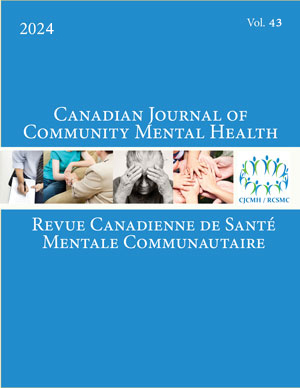Volume 6 • Number 1 • April 1987
OPEN ACCESS
This study presents a Canadian replication of the work of Silbert and Pines (1982a) on entry to prostitution. Our results, like those of the American workers, point to a picture of multiple abuse and degradation of the 45 former prostitutes interviewed, both before and after entry to prostitution. The Canadian work of Badgley (1984), apparently showing juvenile prostitutes are no more likely to experience child sexual abuse than members of the general population, has been criticized on methodological grounds. The present study indicates 73% of prostitutes were sexually abused in childhood, compared to 29% of a control group obtained in a random population survey. Comparison with control subjects indicated severity of sexual abuse in childhood was a significant contributor of the currently poor mental health and diminished self-esteem of the former prostitutes.
OPEN ACCESS
This paper examines the current socio-political language in the formulation of mental health policy in Ontario and Quebec. “Before long,” coherent and rational policy has been promised in each province to “solve” today's mental health crisis—often identified as that of “deinstitutionaliztion.” However, there is not just one view. Here, we examine the arguments presented in the form of briefs, reports, and working documents on the part of mental health professionals, governments and unions, patient groups, and volunteer organizations in both provinces. We analyze the areas of convergence and divergence and attempt to make sense of this mass of material so important in the formulation of a sensible and sensitive government policy of action.
OPEN ACCESS
The Service for Sexual Assault Victims in Halifax reviewed 474 cases of sexual assault handled over a three-year period to determine the nature and relative frequency of social and stranger sexual assault. Women are most likely to be sexually assaulted by a man who is known to and often trusted by them. Women who are raped in a social context are less willing than those raped by a stranger to seek help at the time of the assault, to receive medical attention, or to report the rape to the police. They are also less likely to be threatened with physical harm or to receive physical injury. The cultural values which are responsible for the high frequency of sexual assaults by men who are known to their victims, and for the reluctance of the women to disclose the assault, are discussed.
OPEN ACCESS
In general, suicidal elders truly want to die, hence they tend to use drastic and effective methods of suicide. Unlike among the young, suicidal threats or attempted suicide is uncommon in the older population. This article presents some explanations of the contributing factors that precipitate suicide among the aged. Particular attention is given to retirement, widowhood, depression, and loneliness as related to suicide. Also reviewed are the warning signs or the clues to potential suicide, and the assessment of the suicidal elderly. Finally, suicide intervention and prevention are discussed.
OPEN ACCESS
Self-help groups hold the potential for helping many persons adjust to life stresses. The self-help clearinghouse concept is a community-centred approach toward developing and realizing this potential. This paper presents a history of clearinghouses and an overview of the services they provide. Planning issues and implementation strategies are also discussed. Although the clearinghouse concept has evolved considerably in the last 10 years, many issues remain to be addressed if clearinghouses are to become established community resources. With the resolution of these issues, however, clearinghouses may give rise to an exciting new practice specialty that integrates service and research. Professionals who are self-help movement by contributing to the development of the clearinghouse concept.
OPEN ACCESS
In a survey of employment practices and the employment structure in Halifax, extensive segregation of work was found. Only 17% of 978 categories of work offered by 195 employers contained both male and female employees. The official policy of the Government of Canada is for voluntary rather than mandatory affirmative action. This policy was reaffirmed in 1984 for another five-year period. It was concluded that voluntary programs are unlikely to be successful because employeres who are the source of the segregated work must either correct a situation which is not recognized as discrimination, or alter the segregation of work they prefer.
OPEN ACCESS
The concept of vulnerability has been widely used to explain the empirical relationship between certain sociodemographic characteristics and anxieties about criminal victimization. Building upon this conceptual base, the present study proposes a psychological operationalization of vulnerability. Specifically, the relationship between locus of control and worry about crime is explored through an analysis of data generated from a survey of urban residents. Attention is focused upon two particular issues. The first concerns the extent to which locus of control scores mediate the relationships involving sociodemographic indicators of vulnerability and worry about crime. The second issue relates to an investigation of the mechanisms that provide the theoretical and empirical linkage between locus of control and worry.










